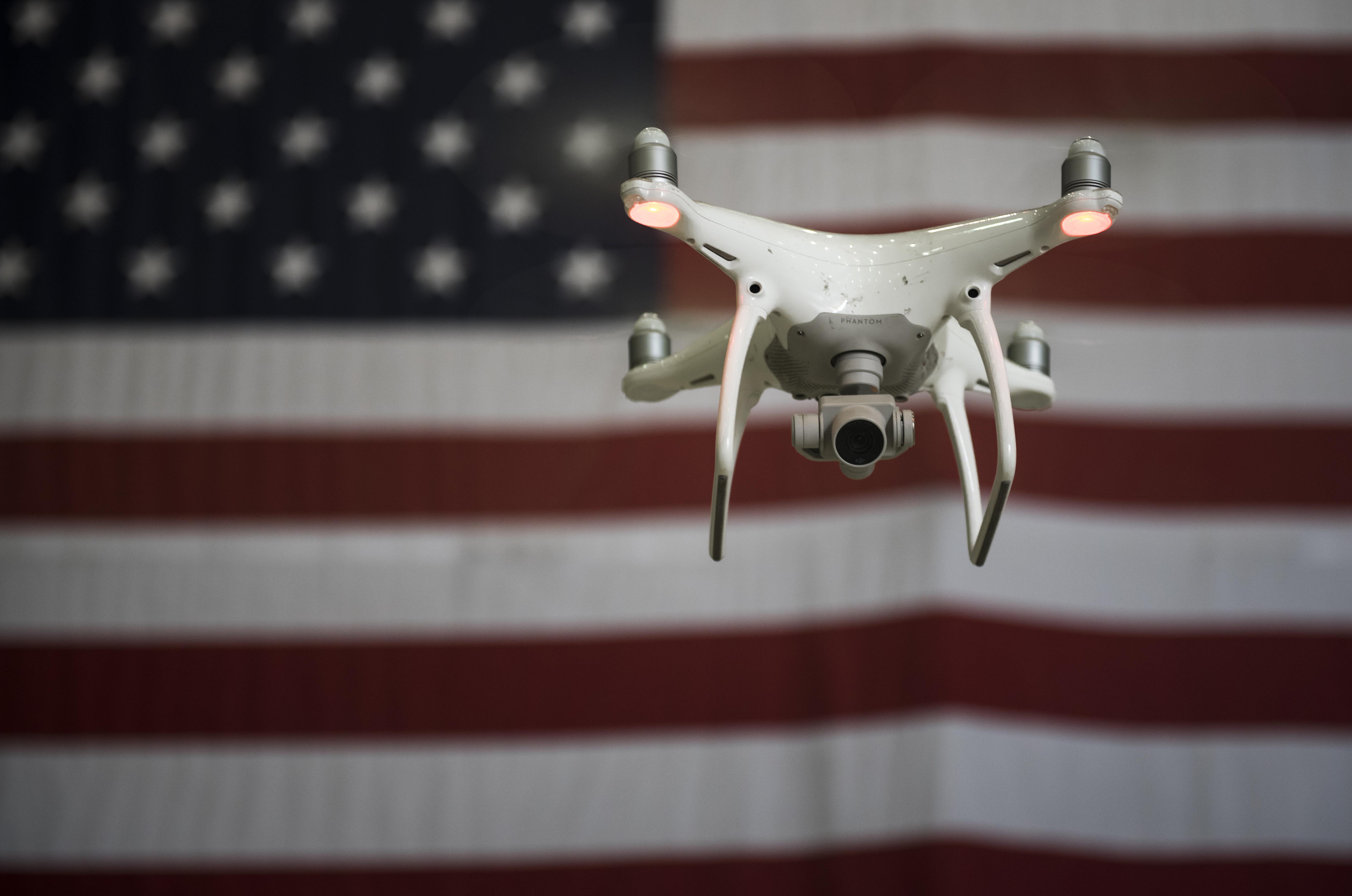The Pentagon has issued classified guidanced intended to help troops counter the threat by drones. Here, an unmanned aircraft system hovers in the air during a live-demonstration at Bagram Airfield, Afghanistan, June 30, 2017. Air Force photo by SSgt. Benjamin Gonsier.
The Pentagon has issued “very specific but classified” guidance detailing how service members can counter threats provided by small unmanned aircraft.
“The Department of Defense is committed to the safety and security of our personnel, installations, and equipment as well as communities near our DOD installations,” according to the statement. “We support civilian law enforcement investigations and the prosecution of unauthorized UAS operations over military installations. Although we will not discuss our specific force protection measures, DOD personnel retain the right of self-defense.”
In March, US Strategic Command boss USAF Gen. John Hyten lamented that DOD was “moving too slow” to address the drone threat. Air Force Vice Chief of Staff Gen. Stephen Wilson noted during that same hearing before the House Armed Services Committee that DOD had “a big team looking at this.”
Gen. Mike Holmes, the commander of Air Combat Command, recently said he need more authority to better defend against small drones, which he ?noted are becoming increasingly dangerous.
A week before Holmes spoke at an AFA event on July 11, he said an F-22 at JB Langley-Eustis, Va., nearly collided with a large hobbyist drone, forcing the pilot to file a report after the incident. The same day, an airman tracked a drone as it flew over the gate shack and the flightline before leaving the area, he added.
“We’re working to get authorities for the nuclear sites first,” Holmes noted. In the meantime, “We’re looking at things that can jam the communications” of a drone, to force it to land, as well as “looking at things that let you take control of them, so you can fly them where you want them to go.” Ultimately, “We’re looking at opportunities to shoot them down, too.”
The Air Force awarded a $15.6 million contract to an Israeli firm earlier this year to develop an unspecified number of counter-unmanned aerial systems, known as “Man Portable Aerial Defense System kits,” which were slated to be delivered by the end of July.
ISIS also has started using small unmanned aircraft drones to collect reconnaissance and to drop munitions on troops down range.
The 455th Expeditionary Security Forces Squadron at Bagram Airfield has been working with the Air Force Research Lab to teach airmen how to fly drones and use them to train coalition forces how to react when they see them on the battlefield. The program allows the airmen to learn how the enemy may use unmanned aircraft and test how to counter them.
“This allows us to be better prepared,” said 1st Lt. Ryan Wilkerson, a researcher with the 455th ESFS. “The best way to train is to actually put something in the air and see how people react. We train how we fight, so this is the most efficient way to counter this growing concern amongst coalition partners.”
